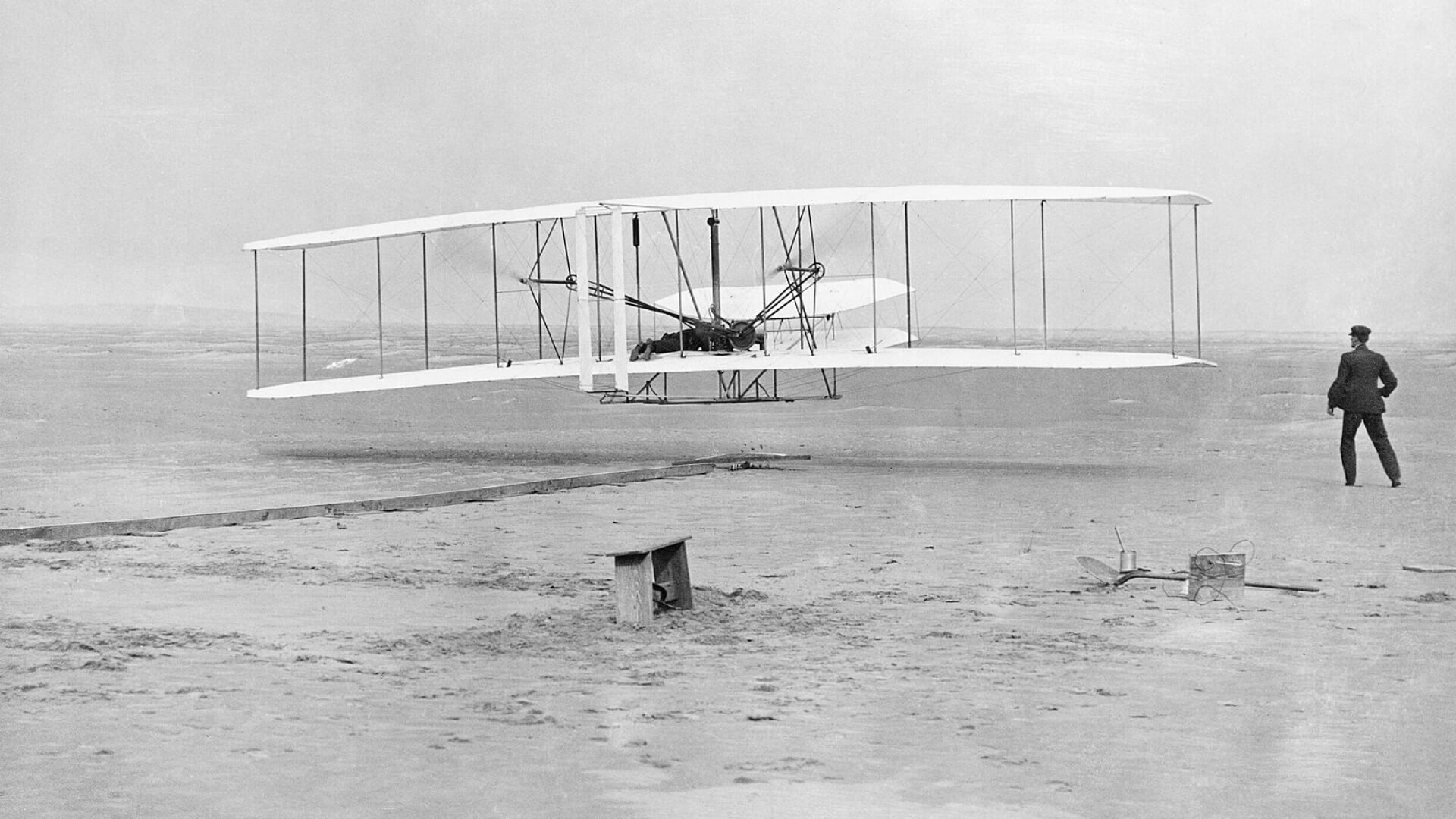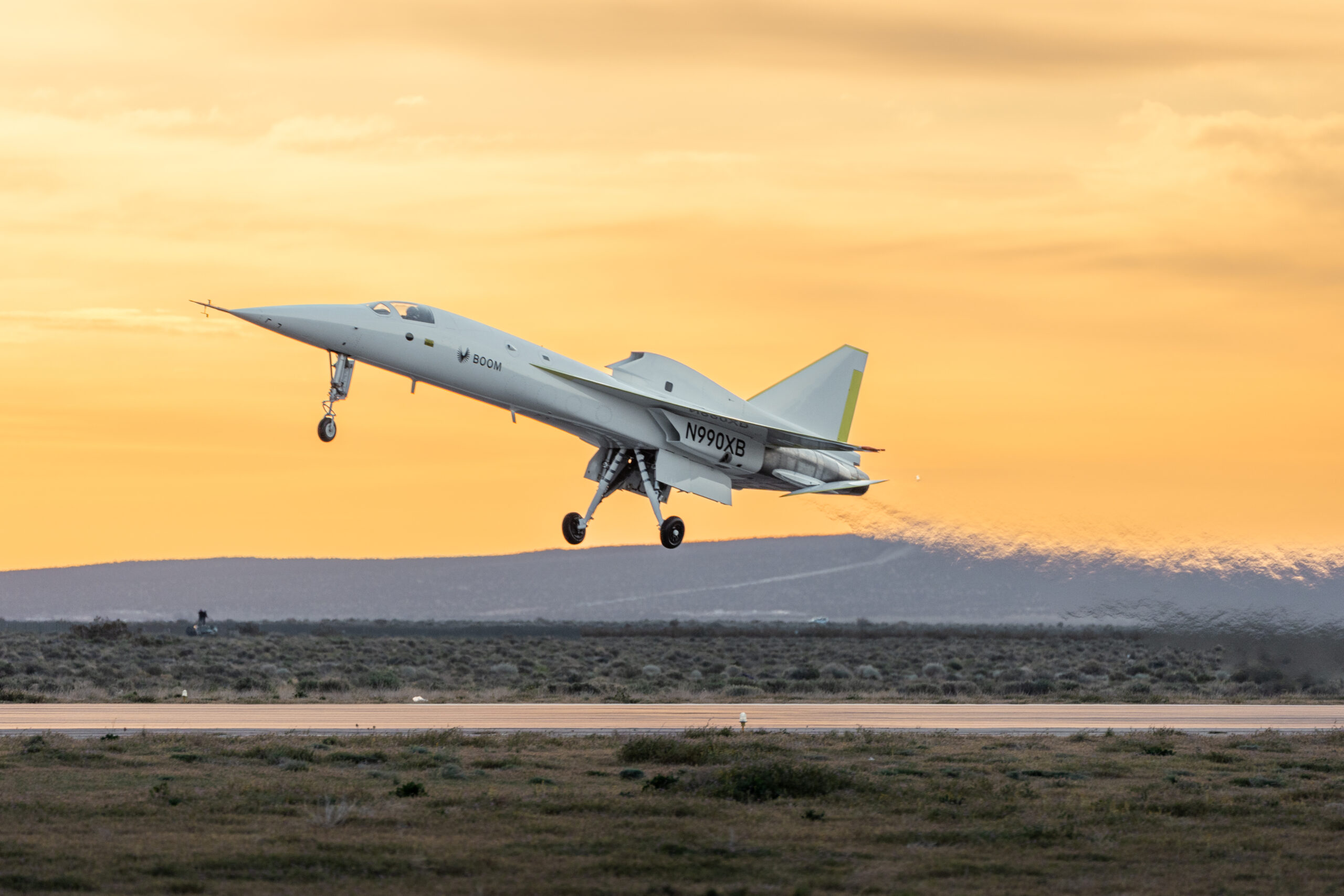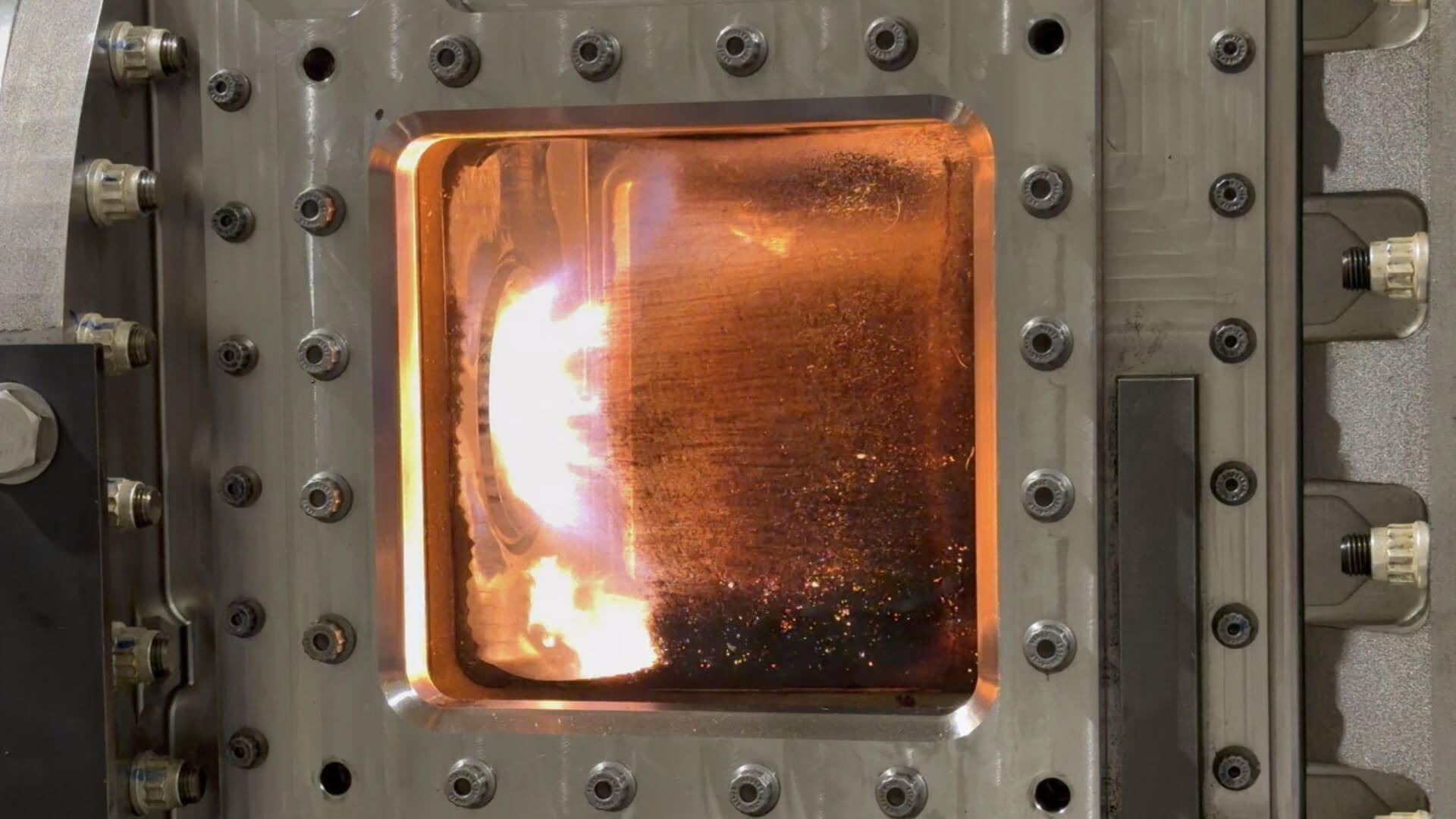Boom’s demonstrator aircraft, XB-1, took off for the first time during a successful test flight at the Mojave Air & Space Port in Mojave, California. The inaugural flight of XB-1, the world’s first independently developed supersonic jet, took place in the same airspace that hosted many historic first flights, including the flights of the Bell X-1, the North American X-15, and the Lockheed SR-71 Blackbird.

Mojave Air & Space Port sits adjacent to the largest single area of overland Special Use Airspace in the United States, designated the R-2508 Complex. The R-2508 Complex includes all the airspace used and managed by Naval Air Weapons Station China Lake, the National Training Center at Fort Irwin and Edwards Air Force Base.
This region is the proving grounds for the aerospace industry, where an aircraft broke the sound barrier for the first time in 1947 and where speed and altitude records are set.

Aerospace Firsts in Mojave
Breaking the sound barrier for the first time
Brigadier General Charles “Chuck” Elwood Yeager became the first pilot in history confirmed to have exceeded the speed of sound in level flight on October 14, 1947. Yeager flew the Bell X-1 rocket plane in the vicinity of what is now the R-2508 Complex.
Yeager rode the X-1, attached to a B-29 mothership, to an altitude of 25,000 feet (7,600 meters). The X-1 then rocketed separately to 40,000 feet (12,000 meters), and Yeager became the first man to break the sound barrier. As he passed the sound threshold, controllers on the ground heard a sonic boom thunder across the desert.
Reaching the edge of space
In the 1960s, a select group of NASA test pilots including Neil Armstrong flew the X-15. It was a rocket-powered aircraft that set records for both altitude and speed, making significant contributions to aerospace research and development.

The X-15 set the record for the highest speed by a manned, powered aircraft at a breakneck Mach 6.72 (4,520 mph or 7,274 km/h). It also set the record for highest altitude reached by a piloted aircraft when it flew over 50 miles (80 km) above the Earth’s surface.
Absolute speed
The Lockheed SR-71 “Blackbird” is a retired strategic reconnaissance aircraft known for its ability to operate at high altitude and high speed over long range. Numerous high-speed, high-altitude flights traversed the R-2508 Complex airspace in the 1960s and 1970s, during which the SR-71 set several records for air-breathing manned aircraft. The SR-71 set the absolute speed record and speed over a straight course at Mach 3.3 (2,193.2 mph), and the absolute altitude record at 85,069 feet (25,929 m).
Around the world
The first aircraft to fly around the world without stopping or refueling was the Rutan Model 76 Voyager, and it first took off from Edwards Air Force Base in the Mojave Desert in 1986.

The brainchild of Scaled Composites founder and CEO Burt Rutan, the Voyager was scratched out on a napkin while at lunch with his brother Dick Rutan and Jeana Yeager (no relation to Chuck Yeager). Dick Rutan and Jeana Yeager piloted the aircraft to a flight endurance record as they flew around the world for nine days, three minutes and 44 seconds without stopping, a total distance of 26,366 miles (or 42,432 km; the FAI accredited distance is 40,212km).
Why Mojave?

Mojave’s airspace is home to frequent flight testing both from the Mojave Air & Space Port and nearby military bases including China Lake, Ft. Irwin, and Edwards. With its unique flight operations and testing capabilities, Mojave was a natural choice for XB-1’s first flight. While some of these flights may break records, they are “routine operations” for the FAA in the restricted airspace above the Mojave Desert.

This area is home to a 50-mile supersonic corridor, a specially authorized area that allows aircraft with designated clearance from the FAA to reach speeds over Mach 1 – breaking the sound barrier – in order to perform test flights over land, such as the record-breaking flights mentioned above.

“It’s a fitting place for us to fly our XB-1 supersonic demonstrator aircraft,” said Vice President of the XB-1 Program, Jeff Mabry. “Not only from a technical standpoint, as far as it gives us the resources that we need to do it, but also from a historical standpoint, as this is where many first flights have happened.”

In 1935, the Mojave Airport opened to serve the local gold and silver mining industry. Over the years, its purpose and name evolved — in July 1942, the U.S. Marine Corps took over the field and vastly expanded it as the Marine Corps Auxiliary Air Station Mojave and in 1961, Kern County obtained title to the airport. The airfield’s name was changed to the Mojave Air & Space Port in 2013.
The Mojave Air & Space Port and industrial park is home to more than 60 companies engaged in flight development, advanced aerospace design, and flight test and research, including Virgin Galactic, BAE Systems, Orbital ATK, Scaled Composites, ASB Avionics, and many more.
Mojave Air & Space Port is also home to the National Test Pilot School (NTPS) where more test pilots are educated than any other site in the world. It is the first facility to be licensed in the United States for horizontal launches of reusable spacecraft, being certified as a spaceport by the Federal Aviation Administration in 2004.

Home to XB-1’s Inaugural Flight

Mojave has been home to XB-1 and the team since relocating from Boom headquarters adjacent to the Centennial Airport in Centennial, Colorado in 2023. Since then, the aircraft has undergone extensive ground testing, including engine runs and high speed taxi tests leading up to first flight.

Late last year and in preparation for XB-1’s first flight, Bill “Doc” Shoemaker, Chief Test Pilot for Boom Supersonic, reflected on the significance of taking flight in Mojave.
“XB-1 is now progressing toward first flight at the Mojave Air & Space Port, home to more than 50 first flights and other significant aviation events,” said Bill “Doc” Shoemaker, Chief Test Pilot for Boom Supersonic. “I’m looking forward to flying XB-1 here, building on the achievements of other talented engineers and pilots who inspire us every day to make supersonic travel mainstream.”








